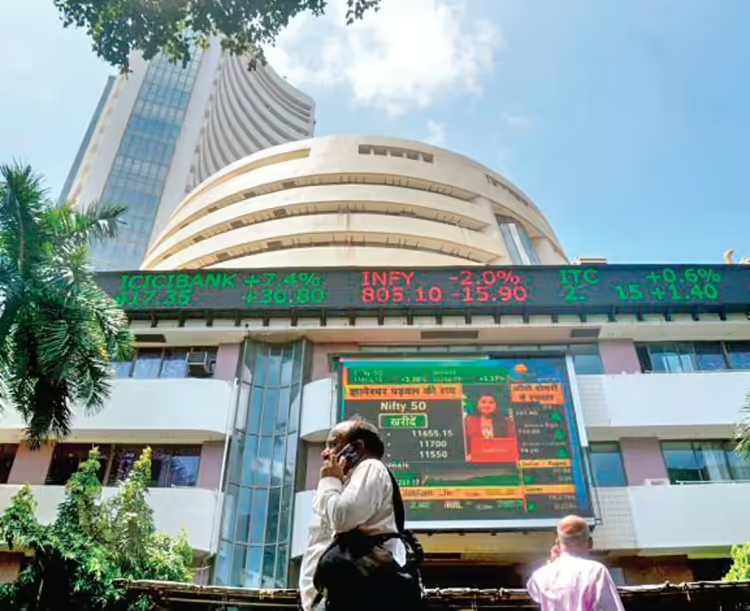With both indexes posting 25% year-over-year gains, the market had its second-best surge in the previous five fiscal years in the year ending in March 2024. This unprecedented run also smashed records in a less popular market section, the margin trade financing (MTF) book of brokerages.

From R7,100 crore in early February 2020 to little over R 57,100 crore in March, the MTF book of brokerages saw an incredible rise. With the market capitalization now hovering around $5 trillion, the Sensex had its greatest gain in FY21, rising 68% and making investors millions of dollars wealthier. By this March, the indexes had recovered a whopping 187% from the pandemic lows of March and April 2020. According to Icra Ratings, the brokerage industry’s MTF books have more than quadrupled from over R 26,000 crore in March 2023 to over R57,100 crore in March, or have grown astronomically from a pitiful R7,100 crore in February 2020.
Increased financing expenses for margin
Both brokers and investors are laughing their way to their banks at such a huge increase that has occurred in only four years. The investors in this case, known as borrowers, were only paying 12–14% interest each month on the money they had previously borrowed as margin financing from their brokerages. But it is now in the past. Brokers will not only hurry to their banks, but sprint there as a result of the price increase of more than three percentage points this month, reaching 18–20%.
However, investors’ journey to profit will be much more drawn out and laborious due to the impending poll-related uncertainties, the market’s ensuing volatility, and the twin whammy of increased interest outgoes. While no brokerage has publicly revealed their increased price, several have either admitted to doing so or are in the process of doing so, pushing it up to 18–20%.
Industry experts give these two explanations. The Reserve Bank, which is the main source of MTF, has reportedly tightened regulations, pressuring non-banking lenders to increase their financing costs to brokers out of concern that an excess of leverage in MTFs might lead to a bubble. Because of this, brokerages’ borrowing costs have recently increased by 200–300 basis points, or 11% or more.
The second reason is that non-banks have increased the cost of these funds on their own due to internal risk tightening, which was prompted by the RBI’s recent prohibition on lending against shares for JM Financial and IIFL. They are afraid of escalating volatility during a very nasty election season.
Concerning finance for margin trades
For those who are unaware, margin trade financing is a facility in which an investor pays just 25–35% of the value of the stock they purchase, with the possibility of a maximum payment of 5-8 times their own money. The brokerage pays the remaining amount, plus a monthly interest rate of 12–14%.
Accordingly, you may be able to acquire 65% or even 800% more of the same stock via brokerage than you would have with your own investment. To assist investors in this manner, brokers either own their own NBFCs or borrow from banks or other sources, including debt market instruments.
Bank-led full-service brokerages like HDFC Securities, which leads the market with a loan book of nearly R10,000 crore, ICICI, and Kotak are among the firms that typically drive this 30–35% own fund demand. However, standalone players like IIFL, Edelweiss, JM, Motilal, and others offer much higher leverage, up to 5-8 times your own fund on a day when the market is booming. Depending on the kind of stock purchased—large caps or index stocks like those that make up the Sensex and the Nifty, or mid and small caps—this margin percentage is mostly determined dynamically.
It is understandable that HDFC leads the market in outstanding loan volume as it gives the longest MTF facility, spanning 275 trading days, or more than a calendar year of credit. In contrast, most other providers only provide up to 30 days or fewer. However, bargain brokers like as Upstox and Zerodha, along with their rivals, are not involved in the MTF street.
The only requirement for an investor is to electronically pledge the shares purchased through margin funding by the following day or upon receiving an email from the depositories (CDSL or NSDL). If this is not done, your brokerage is legally authorized to square off the shares, a task that is completed by the corresponding risk departments by approximately 2:30 pm.
The next stage is to keep the necessary margin in the bank account connected to your demat account, which also includes the daily interest you owe your brokerage. If you don’t, the risk will once again equalize the position by the pre-noon trading session. But now that the rates have increased significantly, the whole operation will be painful for the debt-funded investor.
This organization claims that bank brokers dominate the MTF market with over 65% of the volume, bolstered by their competitiveness in money market borrowings with respect to both borrowing size and pricing.
An investor would be best served by exercising caution and reducing her margin leverage and total market exposure given the growing costs along with market volatility brought on by the uncertainty surrounding the poll results.
Recognize your hazards.
The majority of the margin percentage is determined using a dynamic process.
The next day, an investor must electronically commit the shares they purchased using margin money.
He or she is responsible for keeping up the necessary margin, which also covers the daily interest owed to the brokerage.
Being cautious is beneficial for an investor.
